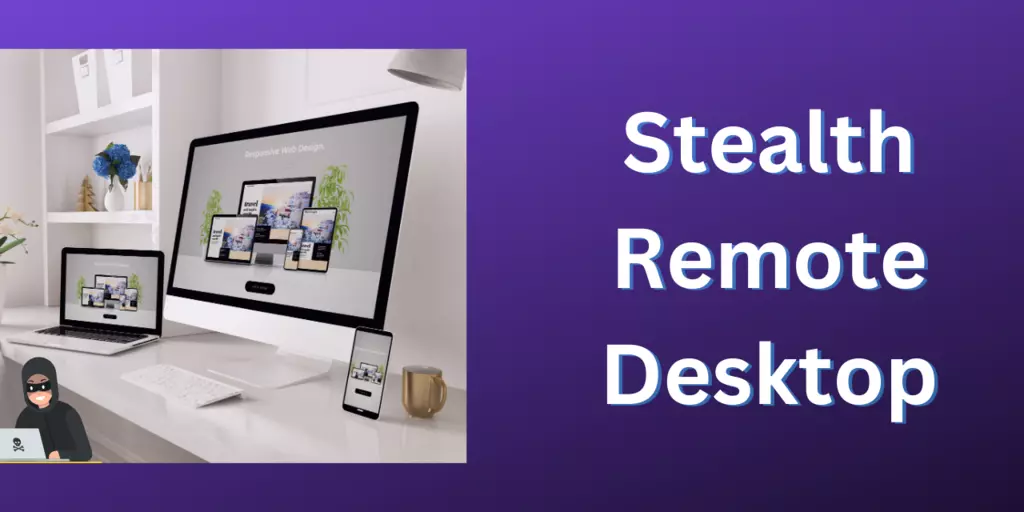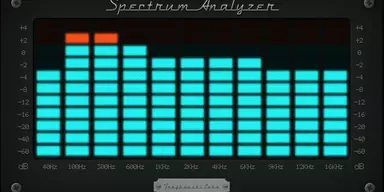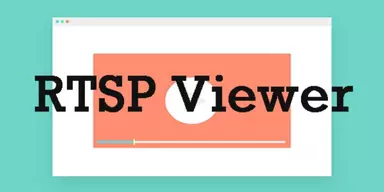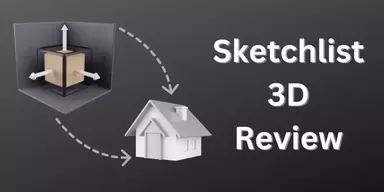Stealth remote desktop refers to a remote desktop connection hidden or disguised from the remote computer user. This can be done by using various techniques, such as masking the remote desktop window as a legitimate application, hiding the remote desktop icon in the system tray, or disguising the remote desktop traffic to look like regular network traffic. The purpose of a stealth remote desktop is typically to gain unauthorized access to a remote computer without the user’s knowledge or consent. This practice is illegal and not recommended.
Stealth remote desktop, also known as a hidden remote connection, refers to a remote desktop connection disguised or hidden from the user of the remote computer. Hackers and cybercriminals often use this technique to gain unauthorized access to a remote computer without the user’s knowledge or consent.
Techniques to Use Stealth Remote Desktop
There are several methods that can be used to create a stealth remote desktop connection.
- One standard method is to disguise the remote desktop window as a legitimate application, such as a system utility or a web browser. This can make it difficult for the user to identify the remote connection and may allow the hacker to remain undetected for an extended period.
- It is to hide the remote desktop icon in the system tray or to create a fake icon that looks like a legitimate system process. This can make it difficult for the user to identify the remote connection and may allow the hacker to remain undetected for an extended period.
- It disguises the remote desktop traffic to look like regular network traffic. This way, it will be difficult for the user or any firewall to detect the remote connection.
Stealth remote desktop is a severe security concern as it allows unauthorized access to a remote computer and can lead to the loss of sensitive information, the theft of personal data, and other malicious activities. It is essential to prevent these attacks by using strong passwords, limiting the number of remote connections allowed, and monitoring your network for unusual activity.
It is also significant to note that using a stealth remote desktop for unauthorized access is illegal and not recommended under any circumstances.
How to Activate It?
It is not recommended to activate a stealth remote desktop, as it is a technique used for unauthorized access to a remote computer. Using stealth remote desktops for unauthorized access is illegal and can lead to serious security breaches and other malicious activities. Instead of activating a stealth remote desktop, securing your remote connections and protecting your network from unauthorized access is essential.
However, suppose you are an IT professional and need to access a remote computer for troubleshooting or maintenance purposes. In that case, there are legitimate tools and techniques that you can use to establish a remote connection while being stealthy such as:
- I am using a VPN (Virtual Private Network) to encrypt the remote connection traffic, which makes it difficult for any firewall to detect the remote connection.
- Using RDP (Remote Desktop Protocol) over SSH (Secure Shell) tunneling to encrypt the remote connection traffic
- Use a Remote Administration Tool (RAT) designed for legitimate remote access and management, but be sure to use it in compliance with your organization’s security policies and procedures.
In any case, if you are going to perform any remote access, it is essential to have the necessary permissions and to follow your organization’s security policies and procedures.
Is Stealth Remote Desktop An Illegal Software?
Stealth remote desktop software, in and of itself, is not necessarily illegal. However, using such software to gain unauthorized access to a remote computer is illegal in most jurisdictions.
In many cases, stealth remote desktop software is used by hackers and cybercriminals to gain unauthorized access to a remote computer, which can lead to the loss of sensitive information, the theft of personal data, and other malicious activities. Using such software for these purposes is illegal and can result in severe penalties, counting fines and imprisonment.
On the other hand, some legitimate remote administration tools (RATs) can have stealth features. Still, these are intended for use by IT professionals for troubleshooting and maintenance purposes, with the proper authorization and under compliance with the company’s security policies and procedures.
It is important to note that using any software to gain unauthorized access to a remote computer is illegal, and any actions resulting from such a permit may also be unlawful. Using caution and following the law when working with remote access software is essential.
Risks of the Software
The use of stealth remote desktop software can lead to several risks and security concerns, including:
Data Loss or Theft
Hackers and cybercriminals can use stealth remote desktop software to gain unauthorized access to sensitive information, such as personal data and financial information. This can lead to identity theft and financial losses.
Network Compromise
Stealth remote desktop software can be used to gain unauthorized access to a remote computer, which can then be used as a foothold to launch further attacks on the network. This can lead to a compromise of the entire network and the loss of sensitive information.
Legal Repercussions
Using stealth remote desktop software for unauthorized access is illegal in most authorities and can lead to severe penalties, including fines and imprisonment.
Brand Damage
If a company’s network is compromised by unauthorized access, it can damage brand and customer trust.
System Disruption
Stealth remote desktop software can disrupt or damage the remote computer and its resources, leading to system downtime and lost productivity.
Detection
The security software can easily detect some stealth remote desktop software
It is important to remember that using stealth remote desktop software for unauthorized access is illegal and can lead to serious security breaches and other malicious activities. It is essential to use caution, follow the law when working with any remote access software, and implement the necessary security measures to protect your network and data from unauthorized access.
Wrapping Up
Stealth remote desktop software is a technique that allows a user to gain unauthorized access to a remote computer. This is typically done by installing a remote access tool (RAT) on the target computer, which can then be used to control the computer and access its files and resources remotely.
However, using stealth remote desktop software for unauthorized access is illegal in most jurisdictions and can lead to severe consequences, including fines and imprisonment. Using stealth remote desktop software can also lead to several risks and security concerns, including data loss or theft, network compromise, legal repercussions, brand damage, system disruption, and detection difficulties.
While some legitimate remote administration tools (RATs) can have stealth features and can be used by IT professionals for troubleshooting and maintenance purposes, with the proper authorization and compliance with the company’s security policies and procedures, it is essential to use caution and follow the law when working with any remote access software. It is crucial to have the necessary security measures to protect your network and data from unauthorized access and to stay vigilant to detect any suspicious activity.






















